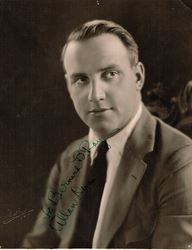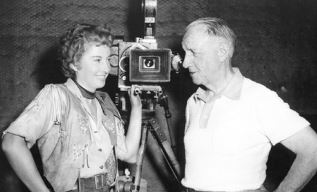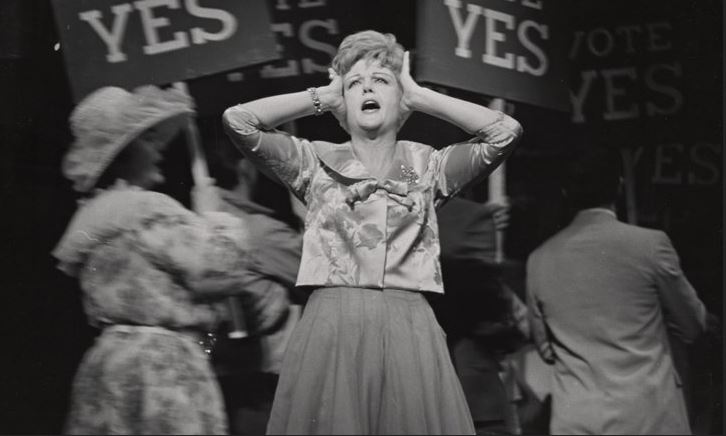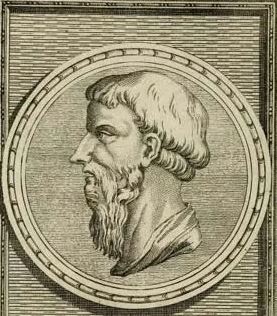Allan Dwan is one of the most prolific and influential directors in the history of American cinema. Spanning over five decades, his career witnessed the transition from silent films to talkies and from black-and-white to color, making him a key figure in the development of the film industry. This article explores the life, work, and legacy of Allan Dwan, providing an insightful look into a filmmaker whose contributions have shaped the art of storytelling on screen.
Early Life and Entry into Film
Allan Dwan was born Joseph Aloysius Dwan on April 3, 1885, in Toronto, Canada. His family moved to the United States when he was young, and Dwan grew up in the Midwest. Initially studying engineering at the University of Notre Dame, Dwan’s path to cinema was serendipitous. His technical knowledge, particularly in electricity, led him to develop an interest in the emerging field of motion pictures, a fascination that quickly turned into a career.
- Early Career: Dwan began his career in the film industry in the early 1900s, working as a scenario writer and then as a director. He made his directorial debut in 1911 with short silent films, quickly gaining a reputation for his ability to produce films efficiently while maintaining high quality.

The Silent Era: Crafting a Legacy
During the silent era, Allan Dwan became known for his versatility and innovation. He directed a wide range of films, from comedies to dramas to action-packed adventures. His ability to work across genres made him a sought-after director in Hollywood.
- Innovations: Dwan was a pioneer in many technical aspects of filmmaking. He was among the first to use moving cameras to follow the action, a technique that added a dynamic quality to his films. His engineering background also helped him devise new methods of lighting and special effects, which enhanced the visual storytelling of his films.
- Notable Works: Some of Dwan’s notable films from this period include Robin Hood (1922), starring Douglas Fairbanks, and The Iron Mask (1929). These films showcased Dwan’s talent for epic storytelling and his ability to work with some of the biggest stars of the time.
Transition to Sound: Reinventing His Craft
The advent of sound in the late 1920s posed a challenge to many silent film directors, but Allan Dwan adapted quickly to the new technology. He continued to direct a steady stream of films, demonstrating his ability to reinvent his style while maintaining his distinct directorial voice.
- Sound Films: Dwan’s early sound films, such as The Iron Mask (1929), which was re-released with added dialogue sequences, highlighted his seamless transition into the new era of cinema. Throughout the 1930s and 1940s, Dwan directed a series of popular films, including Rebecca of Sunnybrook Farm (1938) and Brewster’s Millions (1945), which further cemented his status as a versatile and reliable director.
- Working with Stars: Dwan worked with some of Hollywood’s biggest stars, including Shirley Temple, John Wayne, and Gloria Swanson. His ability to bring out strong performances from his actors was a hallmark of his films, contributing to their commercial and critical success.
Later Career: A Respected Veteran
In the later years of his career, Allan Dwan continued to direct films, though the pace slowed as he moved into the 1950s. Despite the changes in the industry, Dwan remained committed to his craft, producing films that were both entertaining and technically accomplished.
- Final Films: Some of Dwan’s final films include Sands of Iwo Jima (1949), starring John Wayne, and Silver Lode (1954), a Western that is often cited as one of his best works. These films demonstrated Dwan’s enduring talent and his ability to work within different genres successfully.
- Recognition: Although he was not as celebrated as some of his contemporaries during his lifetime, Dwan’s contributions to cinema have been increasingly recognized in the years following his retirement. Film historians and critics now regard him as one of the key figures in the development of early Hollywood cinema.
The Legacy of Allan Dwan
Allan Dwan’s impact on the film industry is undeniable. Over the course of his career, he directed over 400 films, a testament to his prolific nature and enduring passion for storytelling. His work laid the groundwork for many of the techniques and conventions that are now standard in the industry.
- Influence on Filmmakers: Dwan’s innovative use of camera movement, lighting, and special effects influenced generations of filmmakers. Directors like John Ford and Raoul Walsh, who started their careers around the same time as Dwan, were undoubtedly inspired by his work.
- Preservation and Retrospectives: In recent years, there has been a renewed interest in preserving Dwan’s films and studying his contributions to cinema. Retrospectives and scholarly work have highlighted his role in shaping the early film industry and have brought greater recognition to his achievements.
Allan Dwan, The Unsung Hero of Hollywood
Allan Dwan may not be as widely known as some of his peers, but his contributions to cinema are profound and lasting. As a director who bridged the silent and sound eras, he demonstrated a remarkable ability to adapt and innovate, ensuring his relevance across multiple decades of filmmaking. Today, Allan Dwan is celebrated not just for his prolific output but for the artistry and technical mastery he brought to the evolving medium of film. His legacy continues to inspire filmmakers and cinephiles alike, ensuring that his work will be appreciated for generations to come.














